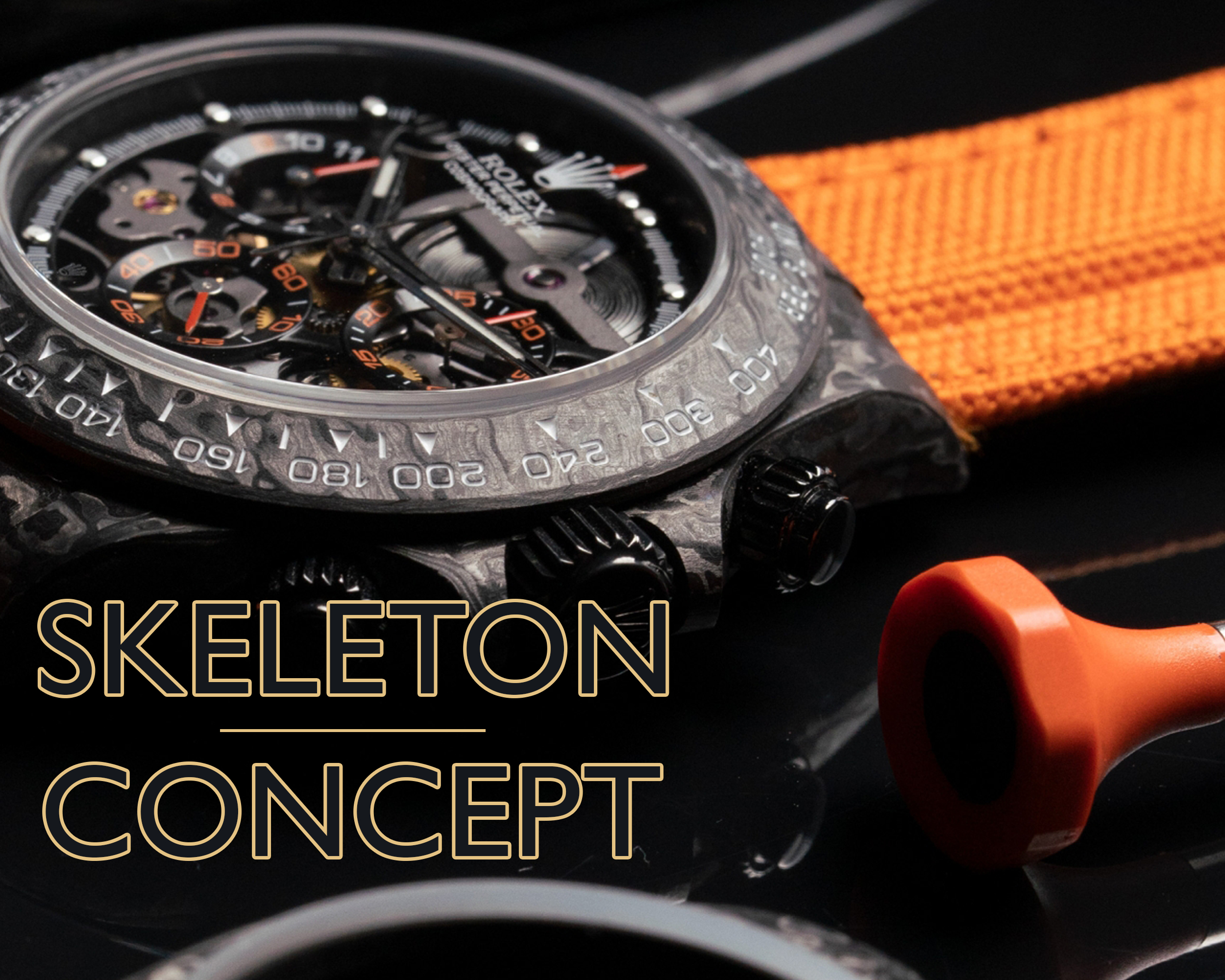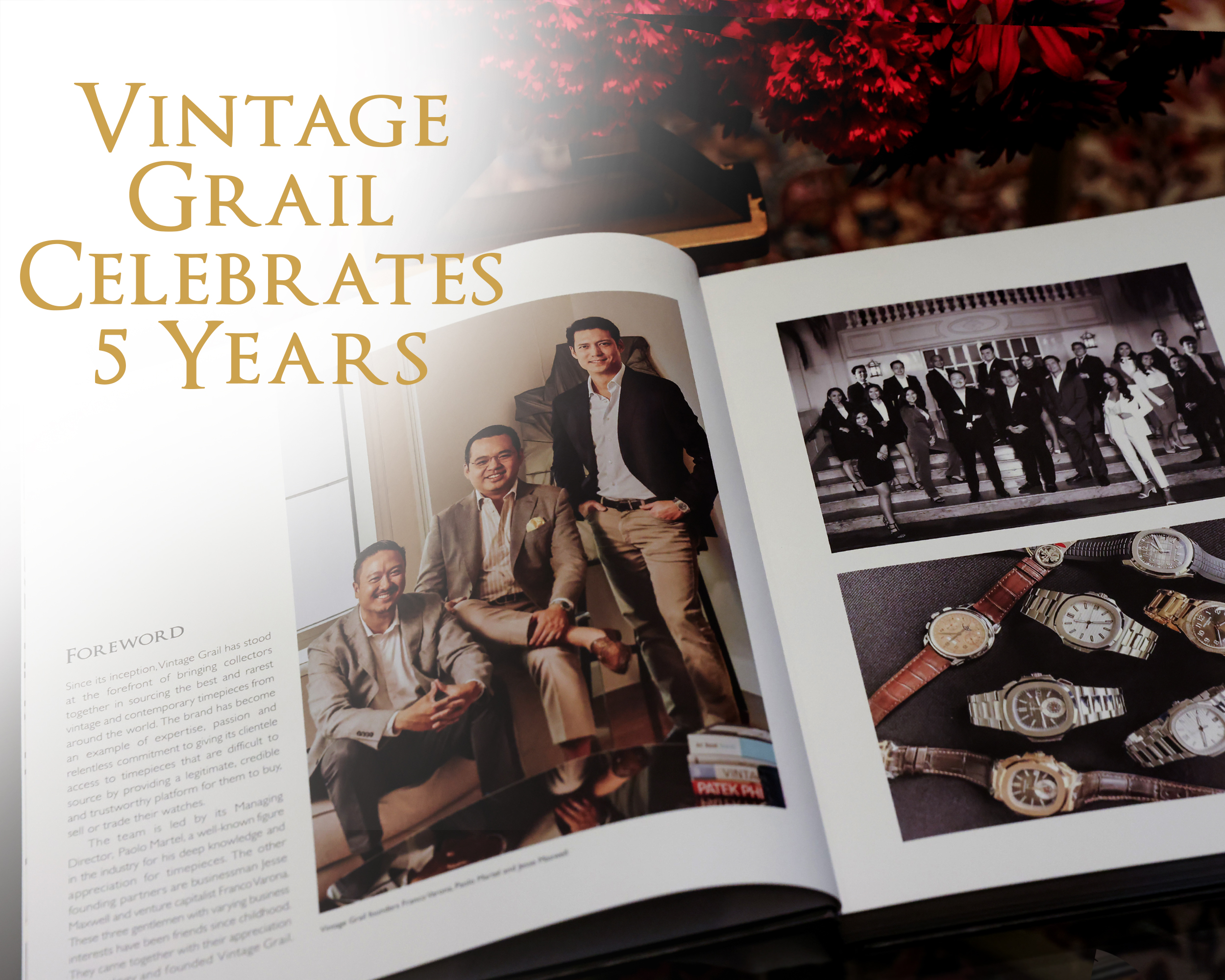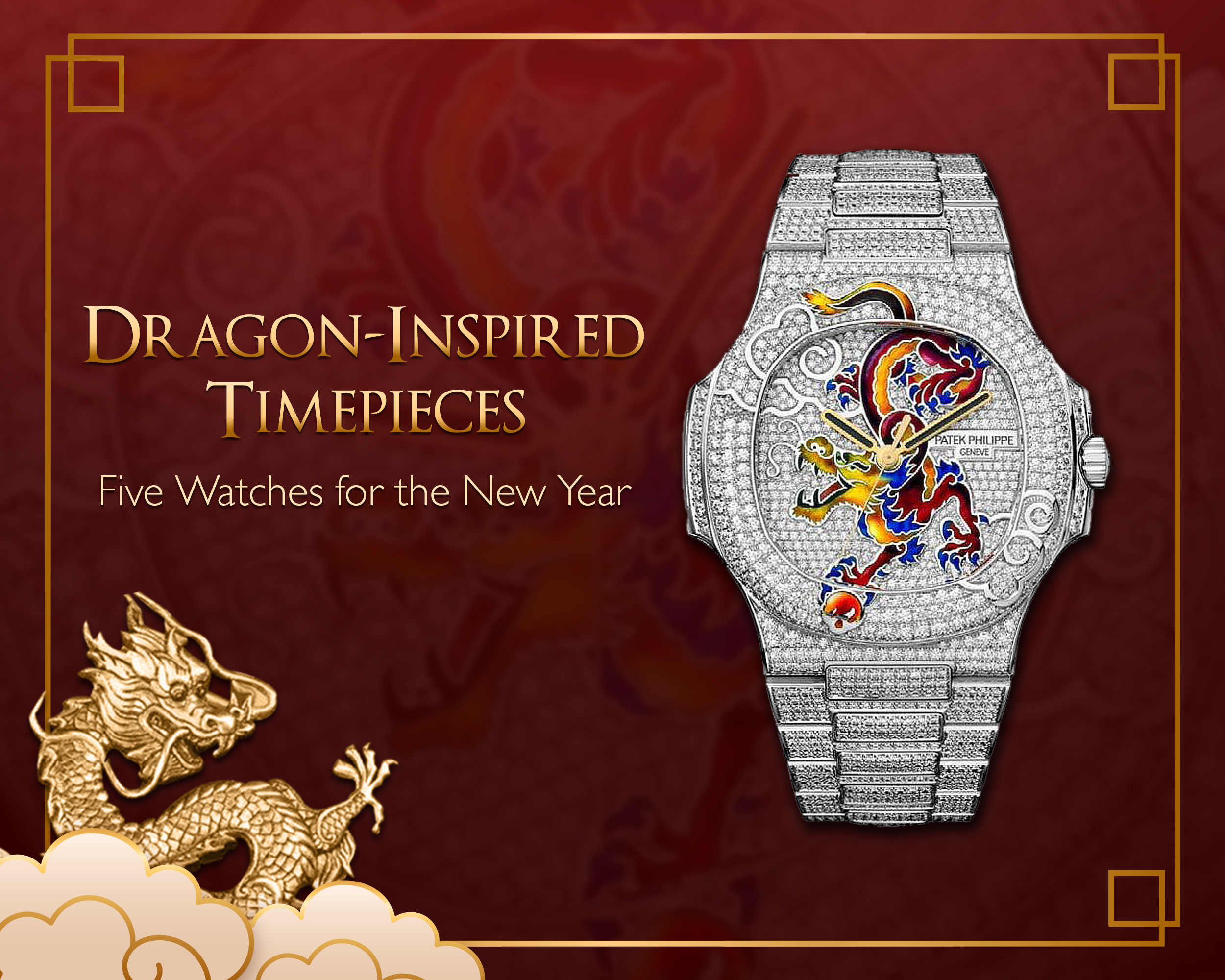Upgrading Your Instagram Game: Tips on Better Watch Photography
By: Chris Van Hoven | Posted: January 21, 2022
We have all been there. You’ve just purchased a new watch and you find yourself staring at it all day. You cannot wait to start taking photos of your new acquisition to show everyone on your Instagram feed. Except once you see the photos, you realize that they are not quite coming out exactly the way you imagined it in your head. The photos you’re taking don’t seem to do it any justice, no matter how many times you reshoot.
The first thing to remember is that you shouldn’t beat yourself up over a shot that doesn’t look like the ad you saw online or in a magazine. Those photos were created using thousands of dollars worth of photography equipment and extensively edited through photography software in post-production. But that doesn’t mean you can’t take great shots of your own with your camera (or even your mobile phone) and some lighting tricks using common household items. All it takes is some planning beforehand and these helpful tips.
Clean the Watch
This seems to be the most obvious first step, though you’d be surprised how often it’s skipped. Small dust particles are easily seen on any up-close shots of your watch. If you’re taking macro shots of the crystal, hands, or even the bracelet, it wouldn’t hurt to first take a dry microfiber cloth and give the watch a good rubbing. You can even dab some soap and warm water on cotton buds to get rid of the stubborn stains in between the lugs and links on a steel bracelet. Just be careful not to do this on leather straps, as cleaning fluids could damage or discolor the material. Do not worry if you still see dust particles on your shot even after cleaning. Sometimes having a completely dust-free shot is impossible depending on different situations. You can always try removing them using photography software later if you want to.
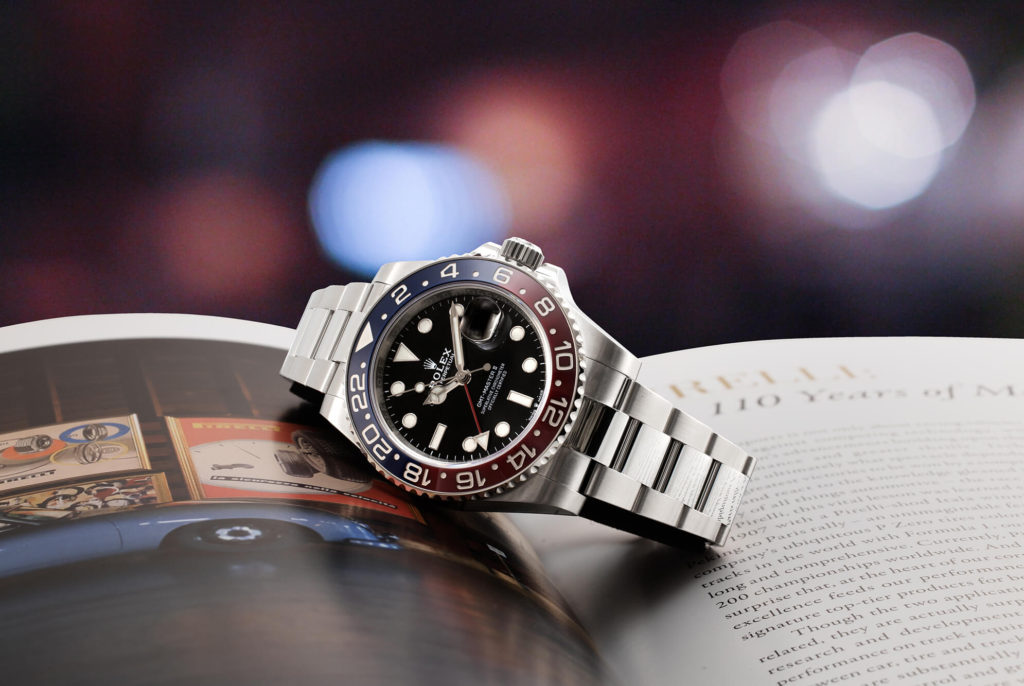 For a perfect image, ensure your timepiece is clean and free from any dust.
For a perfect image, ensure your timepiece is clean and free from any dust.
Adjust the Hands
There’s a reason that watch manufacturers all have the hands of their watches set at the same, or similar time in their ads and other promotional materials. By setting the hands to a 10:10 (or 10:08) position, with the optional second hand at around 35 seconds, you’ll ensure that the dial looks well-proportioned and nicely balanced, with a clear view of any details on the dial you’d want to show, such as text, apertures, or sub-dials. While some of you might think of this step as unnecessary, you’d be surprised at how big a difference it can make with your watch photos.
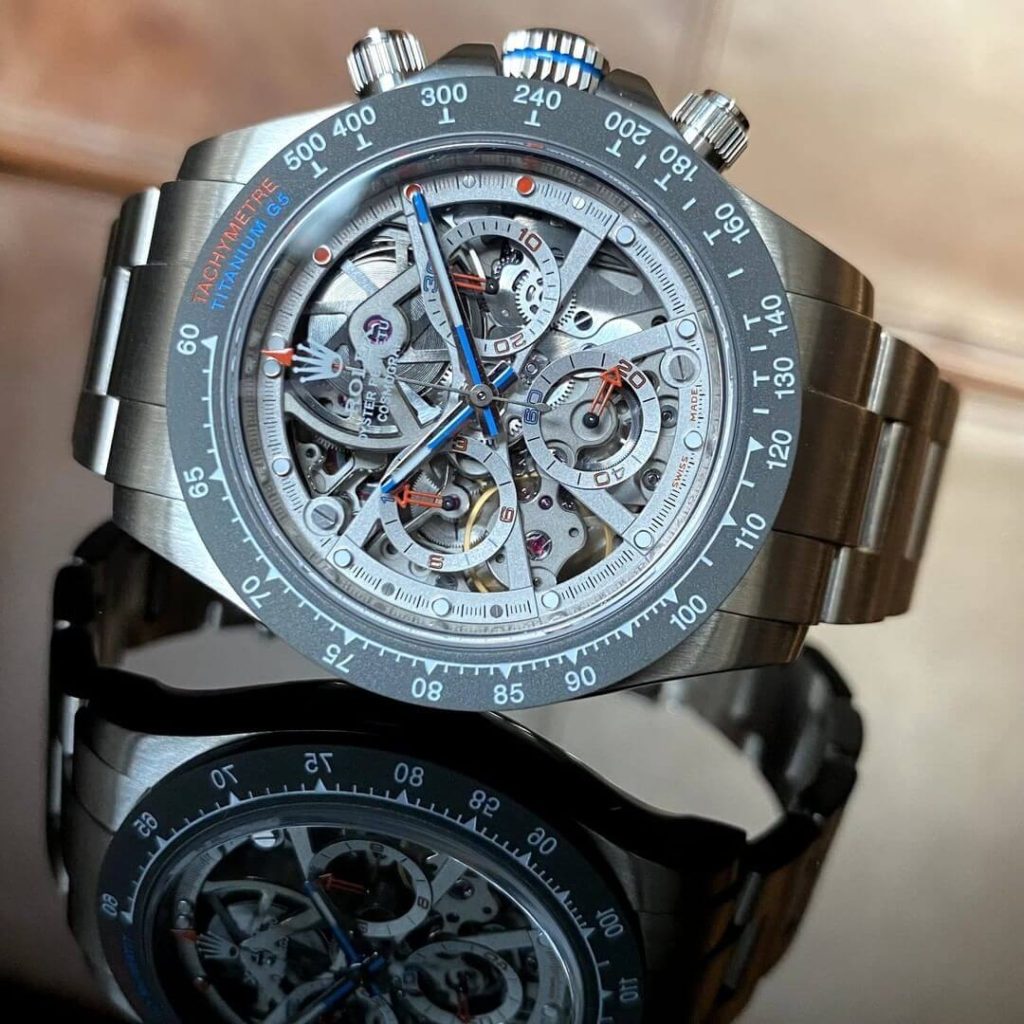 Hands at the 10:10 position make for a cleaner, more symmetrical shot.
Hands at the 10:10 position make for a cleaner, more symmetrical shot.
Arrange the Composition
This is the step that takes the most trial and error to accomplish. Sometimes you’ll get it right the first time, sometimes it could take you half an hour. If you really want to get the most out of your watch photos, you’ll want to find matching props and accessories that tell a story. After all, each watch serves a different purpose, and not all backgrounds will make sense. A dress watch will belong to a different environment from a dive watch or chronograph. Some people use books as backdrops, or something textured like wood or marble. Some will use props that are specifically related to the timepiece, such as a model of the moon for an Omega Speedmaster Professional, or a car engine for a racing chronograph. Alternatively, you could opt for the most popular composition of them all – the wrist shot. But if you want to get serious, even wrist shots deserve special attention. Long sleeves would look better in the photo than your bare wrist since they tend to complement the watch. What you want, whether shooting your watch around your wrist or with accessories, is a clear view of both the watch and bracelet or strap, preferably formed in a way that represents how it would look on your wrist.
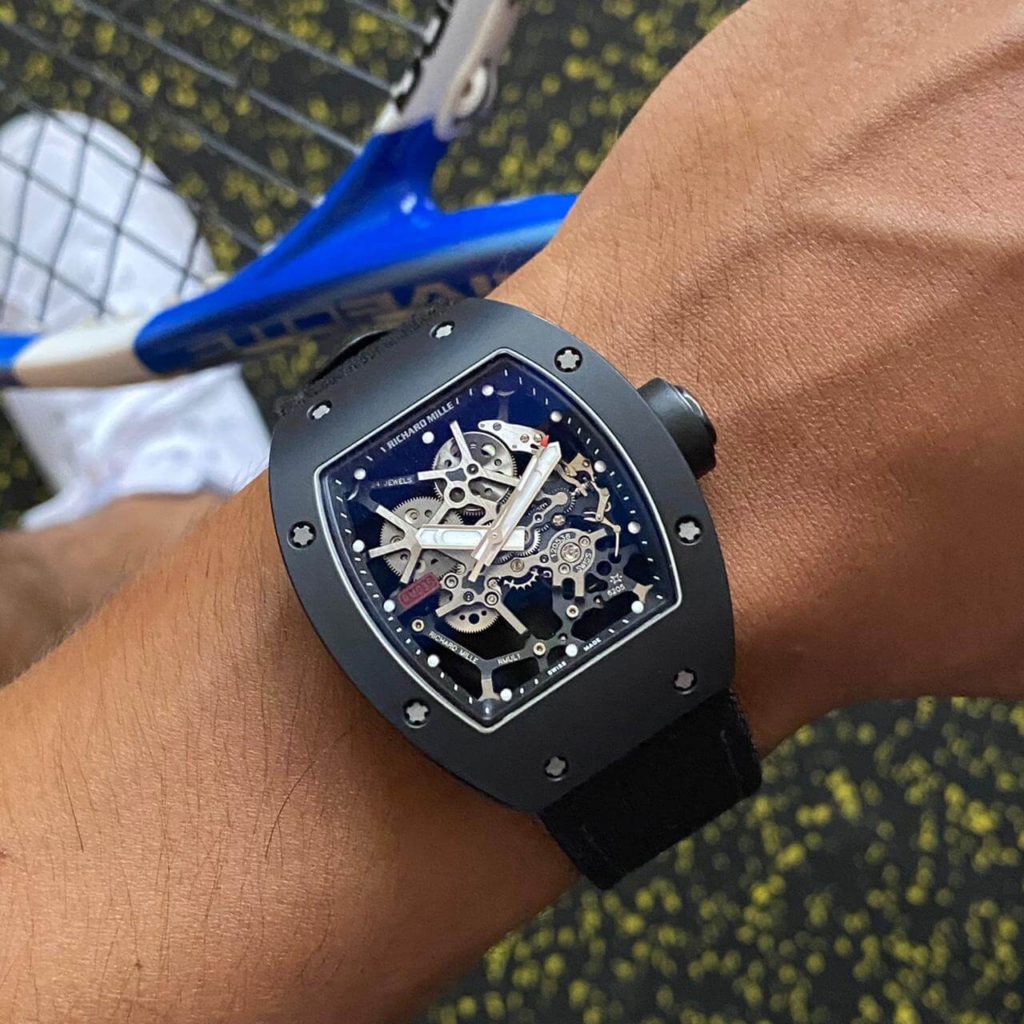 Try to get creative with your background and props.
Try to get creative with your background and props.
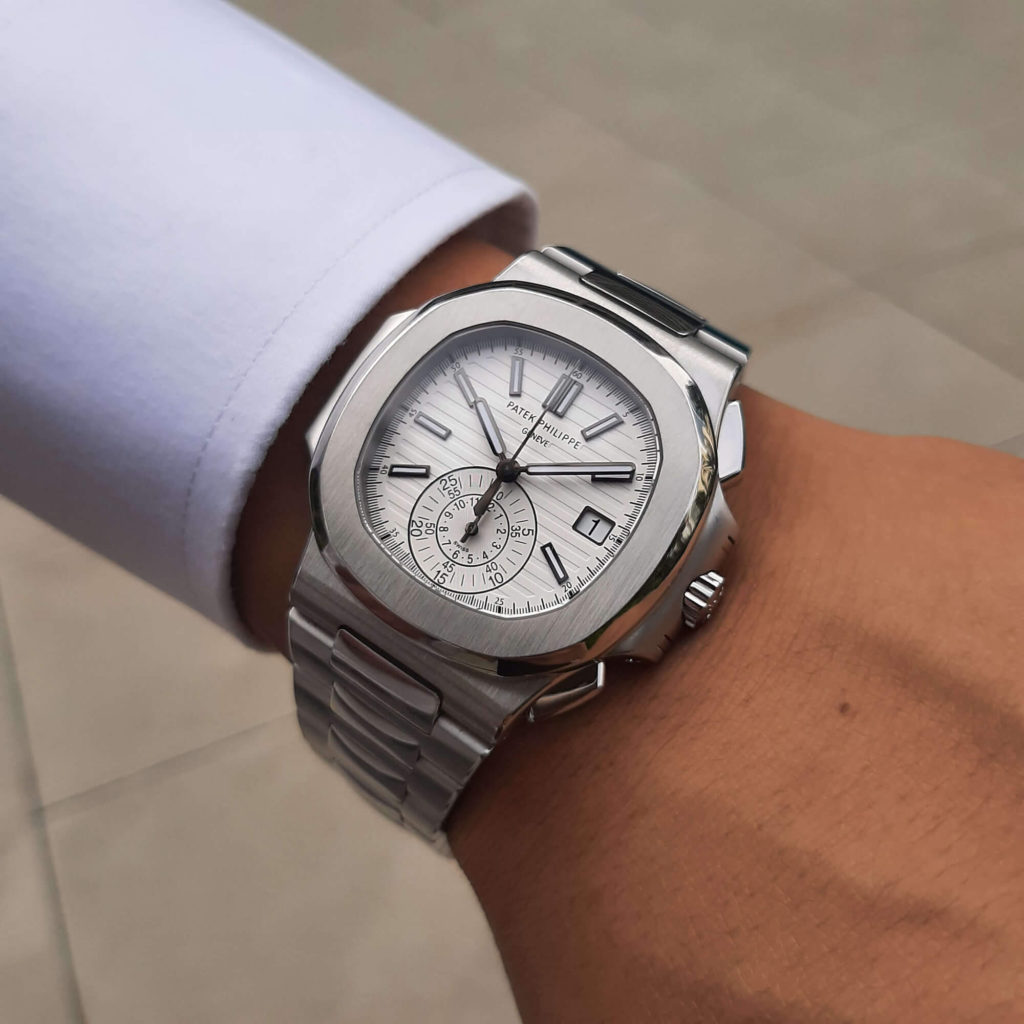 Shirts with visible longer sleeves are preferred when it comes to wrist shots.
Shirts with visible longer sleeves are preferred when it comes to wrist shots.
Play with Lighting
Light can be both a photographer’s best friend and worst enemy. And since watches usually have various reflective surfaces ranging from the case to the bracelet, or even the dial itself, shooting a watch with the right lighting can be challenging. Professional photographers use a wide range of lighting equipment from softboxes, umbrellas, and other types of lighting diffusers in their studios. Since we’re not professional photographers, sheer curtains, a thin white shirt, or any semi-translucent material will do as diffusers. The end goal is to reduce bright light to ensure that none of the details of the watch are lost. Likewise, if there are dark spots in your shot, you can reflect light to it by using some good old Styrofoam that you can prop up with a bookend or something similar.
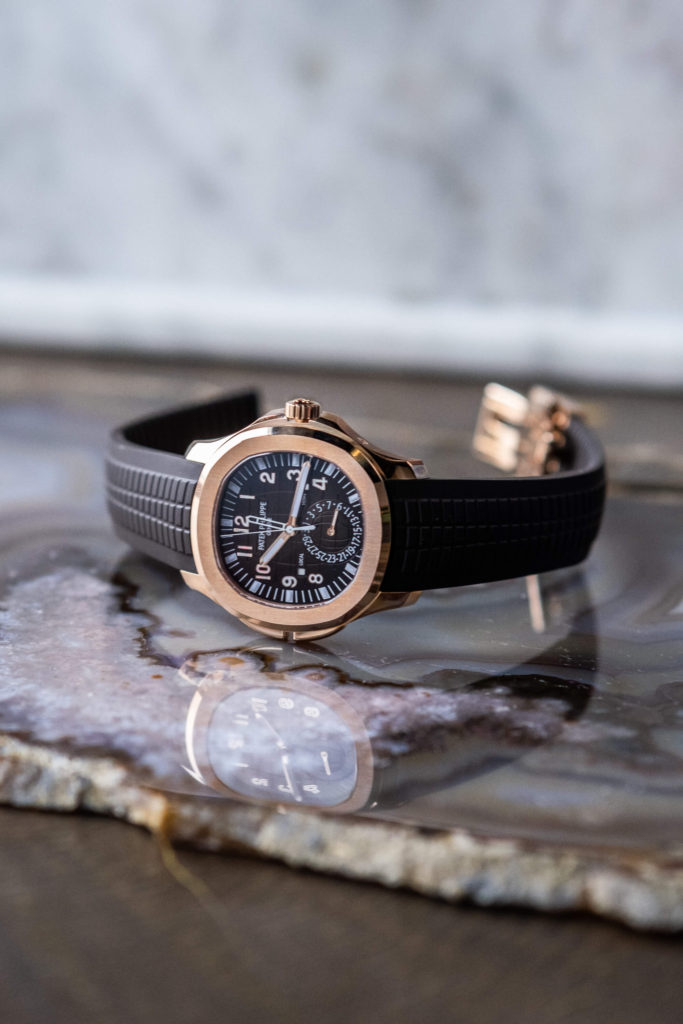 Notice how diffused lighting keeps details from being washed out or looking too harsh.
Notice how diffused lighting keeps details from being washed out or looking too harsh.
Use a Tripod
While not necessary, tripods are a tremendous help in keeping your photo as sharp as possible. Small hand movements can easily result in slightly blurry photos, especially if you’re shooting at a slower shutter speed. If you don’t have a tripod you can use, just remember to keep your hand as steady as humanly possible, and if you’re using a mobile phone to take a picture, simply grazing the shutter button instead of pressing down on it could help in ensuring that the photo comes out sharp.
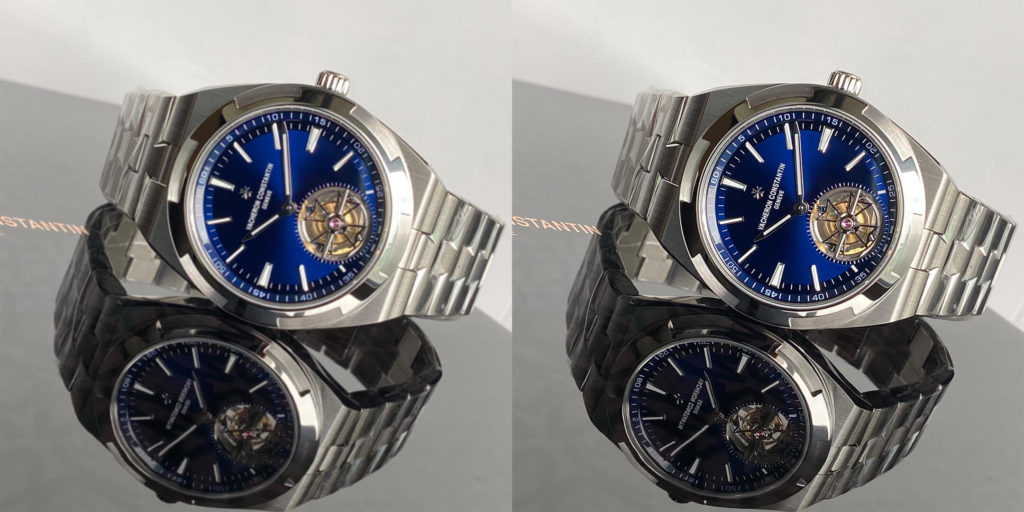 Note the difference if your camera is not placed on a tripod, the end result could be blurry (left), but if fixed on one, a fuller image with the sharper details of the watch shines through (right).
Note the difference if your camera is not placed on a tripod, the end result could be blurry (left), but if fixed on one, a fuller image with the sharper details of the watch shines through (right).
Adjust your Camera Settings
Whether you’re using an DSLR, mirrorless, or phone camera, there are certain settings you’ll want to get the best results. First, make sure you’re shooting at the lowest ISO possible. High ISO values are great for low-light situations but terrible for the sharpness and clarity of your photo. Higher ISO settings can also introduce digital noise into the photo, which we don’t want. Make sure there is a lot of available light, set your ISO to the lowest native setting, choose an aperture setting depending on the kind of depth of field you want, balance your photo’s exposure using the shutter speed adjustment, and take the shot.
 An ISO setting of 200 is typically the lowest most cameras can go. Some can go down to 100 or even 50.
An ISO setting of 200 is typically the lowest most cameras can go. Some can go down to 100 or even 50.
Have Fun!
The last thing to remember is not to take watch photography too seriously. No one will chastise you online if they spot a small smudge on your watch crystal, or if they see a reflection of your camera in the shot. At the end of the day, if you’re happy with the shot and happy with the way your watch looks, then you’ve done a great job. Remember to have fun and keep practicing!
To take a look at our previous collector’s guides, check out previous features on Our Women’s Guide to Vintage Watches, How to Properly Take Care of Your Watch and What Mistakes Have Collectors Made?
Why not start your collecting journey with us? Visit the Vintage Grail website to know more. For more information, contact us at [email protected] or contact us at (+63) 917 159 1211.



